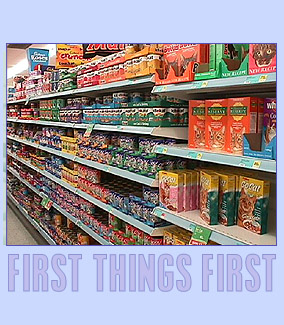
| First Things First, 2000 a design manifesto We, the undersigned, are graphic designers, art directors and visual communicators who have been raised in a world in which the techniques and apparatus of advertising have persistently been presented to us as the most lucrative, effective and desirable use of our talents. Many design teachers and mentors promote this belief; the market rewards it; a tide of books and publications reinforces it. Encouraged in this direction, designers then apply their skill and imagination to sell dog biscuits, designer coffee, diamonds, detergents, hair gel, cigarettes, credit cards, sneakers, butt toners, light beer and heavy-duty recreational vehicles. Commercial work has always paid the bills, but many graphic designers have now let it become, in large measure, what graphic designers do. This, in turn, is how the world perceives design. The profession's time and energy is used up manufacturing demand for things that are inessential at best. Many of us have grown increasingly uncomfortable with this view of design. Designers who devote their efforts primarily to advertising, marketing and brand development are supporting, and implicitly endorsing, a mental environment so saturated with commercial messages that it is changing the very way citizen-consumers speak, think, feel, respond and interact. To some extent we are all helping draft a reductive and immeasurably harmful code of public discourse. There are pursuits more worthy of our problem-solving skills. Unprecedented environmental, social and cultural crises demand our attention. Many cultural interventions, social marketing campaigns, books, magazines, exhibitions, educational tools, television programs, films, charitable causes and other information design projects urgently require our expertise and help. We propose a reversal of priorities in favor of more useful, lasting and democratic forms of communication - a mindshift away from product marketing and toward the exploration and production of a new kind of meaning. The scope of debate is shrinking; it must expand. Consumerism is running uncontested; it must be challenged by other perspectives expressed, in part, through the visual languages and resources of design. In 1964, 22 visual communicators signed the original call for our skills
to be put to worthwhile use. With the explosive growth of global commercial
culture, their message has only grown more urgent. Today, we renew their
manifesto in expectation that no more decades will pass before it is
taken to heart.
Discussion Questions: Take a look at these questions and consider how the article relates to you as a designer. Then... Post your responses on the Press Check website <here>. 1. How do you see your future work as a designer fitting into this proposal? 2. Is design inherently commercial? 3. Can you think of some design work being done that interests you that is not purely commercial? 4. Let's say you were independently wealthy -- instead of having a typical "design job," what type of designs would you REALLY want to create? 5. Explain what you perceive as the difference between "fine art" and "graphic design?" Does this relate in any way to this article? 6. If these established designers are lamenting the current design world, does it make you think any differently about your future as a designer? 7. Create a design (800 x 800 pixels, 72dpi, JPEG, RGB) that is somehow a response to the theme of the article above. Also, use this design to demonstrate some of what you think are your best skills as a designer.
|